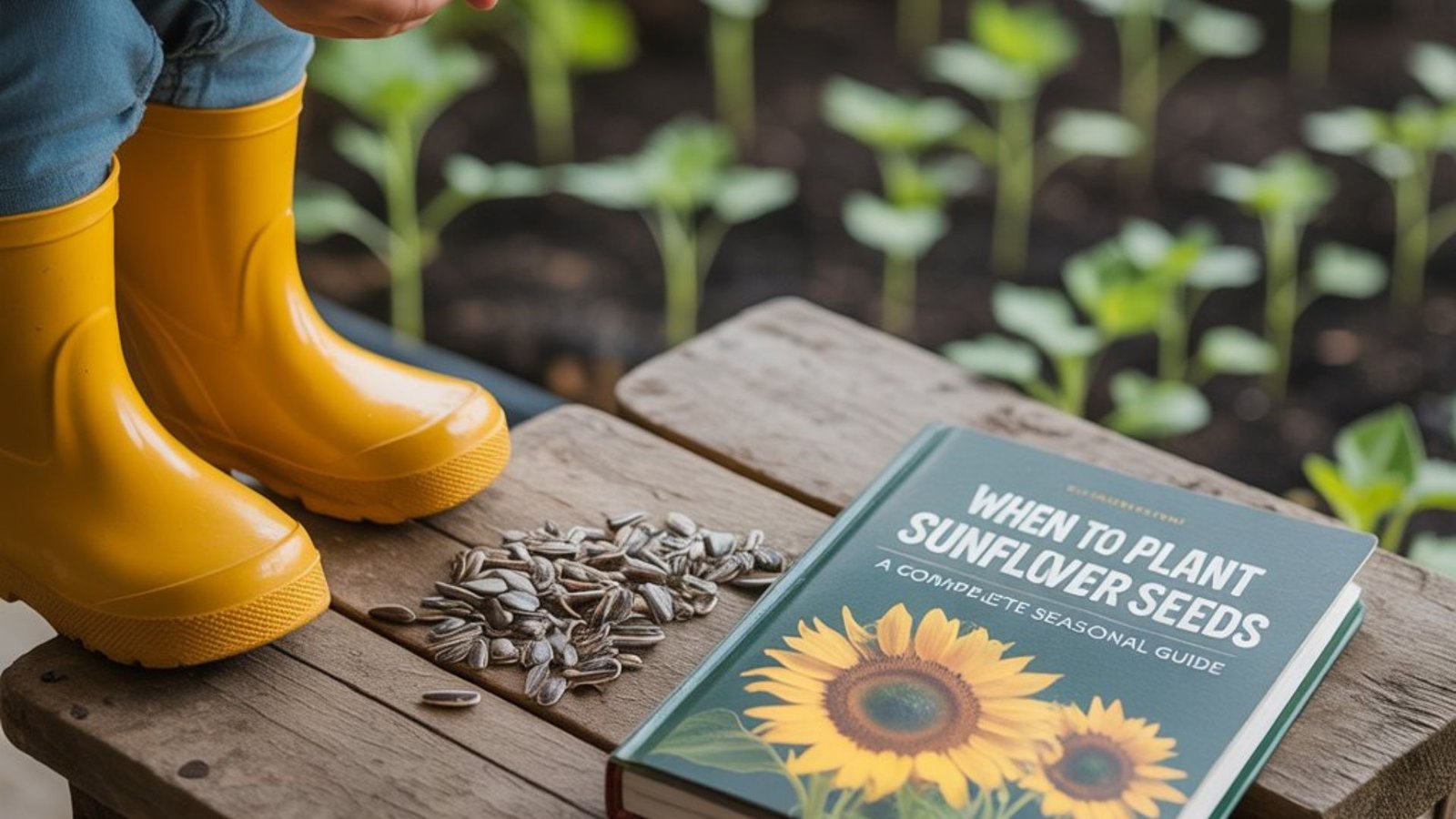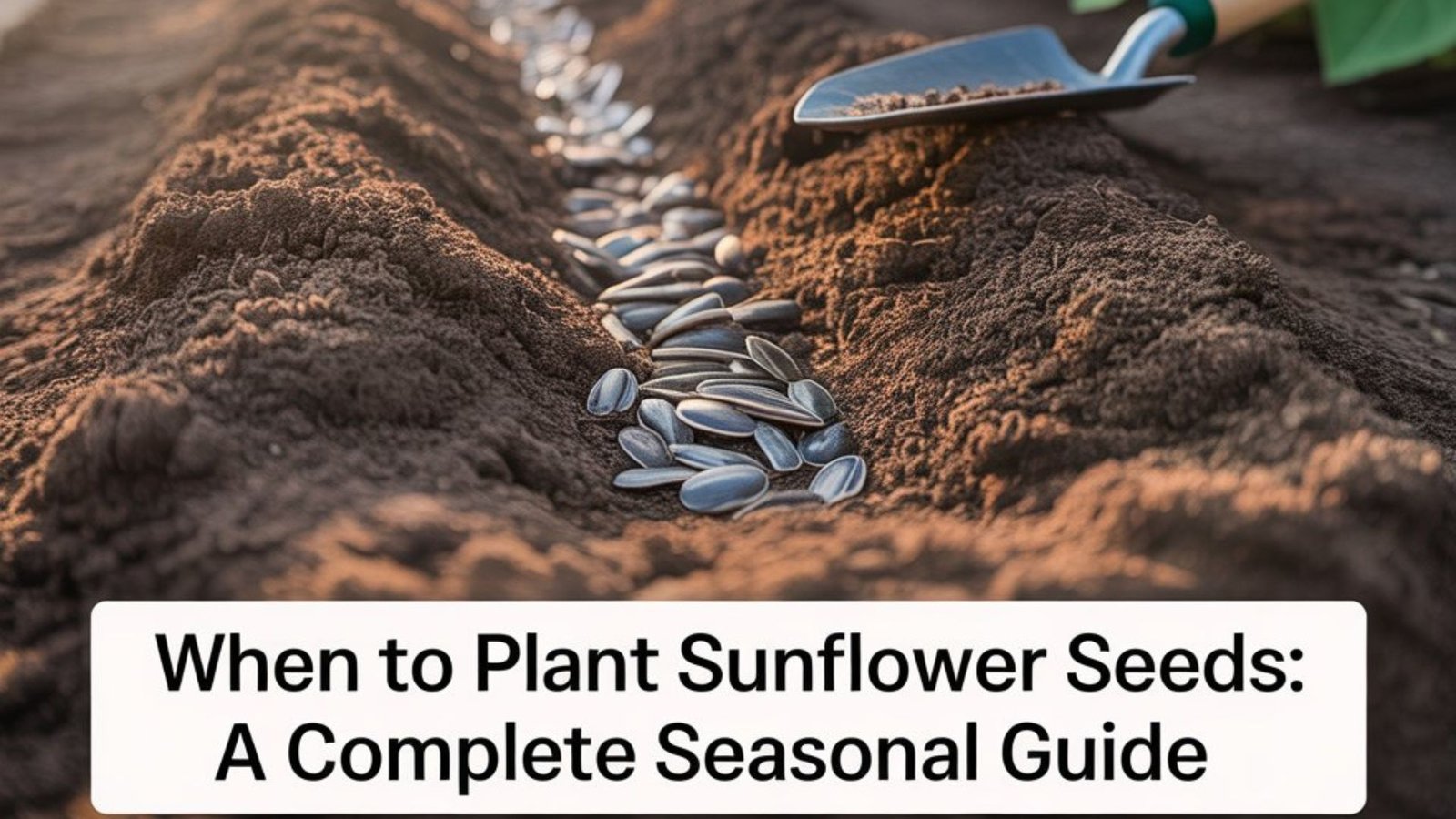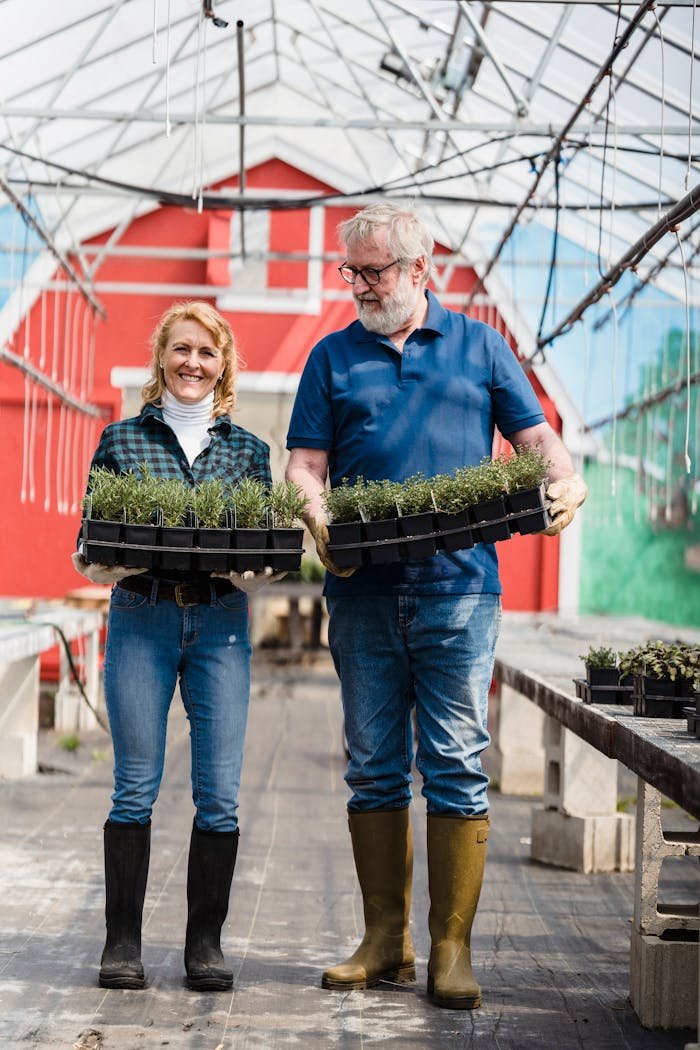Planting sunflowers is a rewarding experience, but knowing when to plant sunflower seeds is crucial for their success. Timing plays a crucial role in ensuring flourishing growth and radiant blooms. Sunflowers are sensitive to frost, so understanding the best time to plant sunflowers based on your region’s climate is essential. Whether you’re growing sunflowers in planters or in your backyard, it’s important to plan accordingly. To maximize the potential of your sunflower garden you’ll need to consider factors like sunflower seed germination, soil temperature, and the sunflower growth stages. In this guide, we’ll walk you through the process, offering tips for sunflower care and the optimal time for planting your seeds.
Understanding Sunflower Growth Stages
To get the most out of your sunflowers, it’s important to understand the sunflower growth stages. These stages start from when you first plant the seeds and Keep going until the flowers open. The first stage is sunflower seed germination, where the seed absorbs water, swells, and sprouts. Next comes the germination stage, where tiny leaves begin to form.
The plant then transitions into the vegetative stage. where it grows tall and produces large leaves. After that, the plant progresses into the budding and blooming phases. where the sunflower blossom takes form and eventually opens. In the end, the sunflower reaches its peak development, and the seeds are ready to be collected.

Understanding these phases assists you in making a decision when to transplant sunflowers from indoors to outdoors. If you are growing sunflowers indoors, you should start them about 6 weeks before the last frost date. Once the sunflowers are ready to be outside, It’s important to prepare plants for outdoor conditions. by gradually exposing them to outdoor conditions.
Common Misconceptions About Sunflower Planting
There are a few myths about planting sunflowers that can confuse even seasoned gardeners. One of the most common misconceptions is that sunflowers need full sunlight all day. While sunflowers do need a lot of sunlight., they also need some time for rest. Growing them in regions with afternoon shelter can help them thrive without wilting or burning.
Another misconception is that you can plant sunflowers at any time. sunflowers are prone to frost damage., so it’s crucial to plant sunflower seeds only after the last frost in your area. Sunflower frost protection is key, as frost can damage or kill young plants. If the weather is still cold, consider growing sunflowers indoors and transplanting them later.
Sunflower History and Significance
Sunflowers were first grown in North America and the people of the Americas began to plant them long before the arrival of Europeans. Sunflowers are very famous for their beauty and seeds, which are used in various things. Sunflowers look very beautiful because of their large leaves. Their seeds are extremely flavorful to consume and packed with nutrients. And so, slowly, sunflowers are becoming popular all over the world. Sunflowers are regarded as a representation of faithfulness and joy.
In addition to being a symbol of beauty, sunflowers also play a role in agriculture. They are grown for their seeds, which are used in oils and snacks. Knowing the history and significance of sunflowers can help you appreciate their value in your garden.
Selecting the Right Sunflower Varieties for Your Garden
Selecting the appropriate sunflower seed types for your garden depends on the space you have and the look you want to achieve. For smaller gardens, consider sunflower varieties for small gardens like the dwarf varieties, which grow only a few feet tall. If you have more space, you can go for taller varieties like the Mammoth sunflower, which can grow over 10 feet tall.
When selecting your sunflowers, it’s important to think about whether you want a single large flower or multiple blooms. Recurrent sunflowers blossom throughout the season, providing continuous beauty in your garden. Remember, the larger the sunflower, the larger the seed. Always ensure that you plant them at the correct sunflower seed depth to encourage optimal growth.
Ideal Soil and Climate for Growing Sunflowers
Sunflowers flourish in well-drained, fertile soil. The soil should be rich in organic material, and the pH level should range between 6.0 and 7.5. If your soil is too heavy, consider adding compost to improve drainage. Sunflowers are greedy plants that require ample nutrients, so make sure to fertilize them during the growing season.
Sunflowers grow best in warm climates with plenty of sunlight. They prefer temperatures between 70°F and 85°F, so the best time to plant sunflowers is in the spring after the risk of frost has passed. In cooler climates, you might need to protect the plants or wait until late spring to transplant sunflowers outdoors. Keep in mind that sunflowers will not grow well if exposed to frost or extreme cold. when to plant sunflower seeds ? Sunflower growing is very easy.
How to Plant Sunflower Seeds: Step-by-Step Guide
Planting sunflower seeds is easy, but there are a few key steps to follow. Start by preparing your soil, ensuring it is well-draining and rich in nutrients. For best results, plant the seeds about 1 inch deep and space them at least 6 inches apart. This ensures each sunflower has enough space to grow strong and tall. If you’re growing sunflowers in containers, make sure the container is large enough to accommodate the sunflower’s root system.
Once you plant the seeds, water them well and keep the soil moist. As the seeds start to germinate, you may need to thin them out, leaving the strongest plant in each spot. You can also add a light layer of mulch to retain moisture and protect the seeds. When sunflower seedling care is done right, you’ll see healthy plants begin to grow. when to plant sunflower seeds ? Growing sunflower seed is very unique method.
Sunflower Care: Best Practices for Healthy Growth
To keep your sunflowers growing strong, follow these sunflower care tips. Regular watering is crucial, especially during dry spells. Sunflowers need consistent moisture, but be sure not to overwater them. Check the soil before watering to make sure it’s not too soggy. Sunflowers are also greedy plants, so adding a balanced fertilizer during the growing season will help them thrive.
Support your sunflowers as they grow, especially if they are tall varieties. Sunflower plant support such as stakes or cages can help prevent the stems from breaking. Sunflowers are strong, but heavy heads and windy weather can cause damage. Make sure to check your plants regularly for signs of pests or diseases. If you notice any issues, address them quickly to prevent further damage.
Dealing with Sunflower Planting Problems
While sunflowers are generally easy to grow, they can face a few challenges. One common problem is sunflower stem splitting, which can occur if the plants are overwatered or exposed to extreme conditions. To avoid this, make sure you maintain a watering schedule for sunflowers that provides consistent moisture without causing stress to the plants.
Another issue is leggy sunflowers, which can happen when the plants don’t get enough light. To prevent this, ensure your sunflowers receive at least 6 hours of direct sunlight each day. If you’re growing sunflowers indoors, be sure to rotate them regularly to ensure even sunlight distribution. If your sunflowers are growing in a greenhouse or on a windowsill, sunflower seedling care indoors will be key to their success.
When and How to Harvest Sunflowers for Seeds and Cut Flowers
The perfect time to reap sunflower seeds depends on the stage of flower maturity. The heads should be fully developed, and the back of the flower should turn yellow. The seeds should be plump and black or striped, depending on the variety. If you’re harvesting sunflowers for cut flowers, cut the stems early in the morning or late in the evening when the flowers are moistened.
If you plan to save seeds, let the flowers dry completely before removing the seeds from the head. Once the seeds are withdrawn, put them in a cool, dry place for later use. If you want a longer bloom season, you can replant sunflowers by saving seeds from your previous harvest or transplanting Sunflower young plants to different areas . Replanting and Regenerating Sunflowers for a Longer Bloom Season
Sunflowers can be repeat flowering sunflowers, which means they’ll continue blooming through the summer. To encourage this, consider replanting new flowers every few weeks, staggering the planting times. This allows you to enjoy sunflowers for a longer period.
For plants that have already bloomed, you can encourage new growth by cutting back spent flowers and removing dead leaves. This process helps the plant focus its energy on producing new blooms. Additionally, consider flowering sunflowers in containers to move them around and extend their bloom season.
Conclusion: Tips for a Successful Sunflower Growing Season
Finally, it is very important to plant sunflower plants on time. Before planting sunflower plants, it is very important to choose a good variety. After planting, it is very important to take care of the plant. Water it on time and it also needs sunlight, then the sunflower plant will bloom well. Whether you are planting sunflower plants in containers, small boxes, or in gardens, it is very important for you to take care of them. If you take proper care of them, then you will be able to get a good yield when to plant sunflower seeds .
With this guide, you are well-equipped to grow sunflowers that will bring beauty and joy to your garden. Whether you are a beginner or an experienced gardener, sunflower seed germination and care will be a breeze when you follow these tips.
FAQs
1. Is it too late to plant sunflowers from seed?
It depends on your location and the climate. If it’s still warm and you have at least 70 days before the first frost, it’s not too late.
2. Should you soak sunflower seeds before planting?
Soaking sunflower seeds is optional but can help speed up sunflower seed germination if done for 6-8 hours.
3.What is the downside to growing sunflowers?
Sunflowers can be greedy plants, needing consistent water and large amounts of space, which might not be ideal for small gardens.
4. How many sunflower seeds should you put in each hole?
Plant two seeds per hole to ensure successful germination, then thin to one plant later.
5. Where is the best place to plant sunflowers?
Sunflowers thrive in full sun with well-drained, nutrient-rich soil, away from strong winds to prevent damage.



